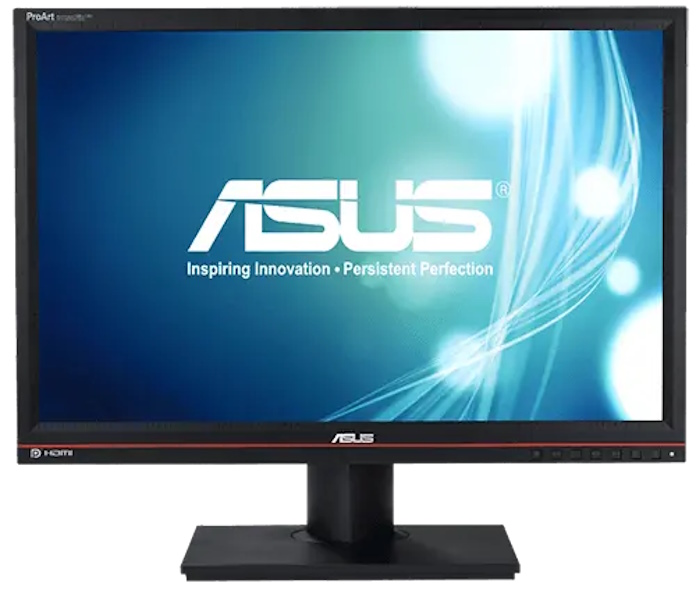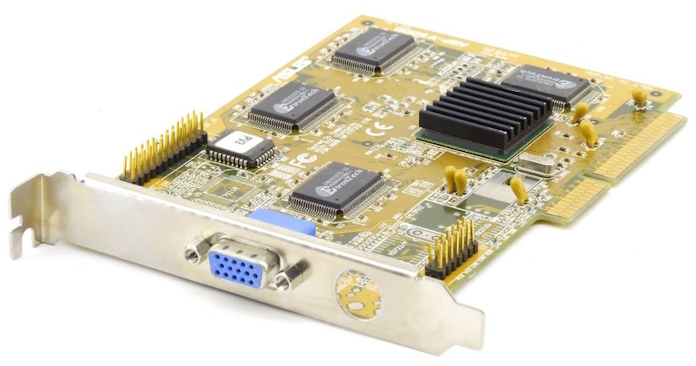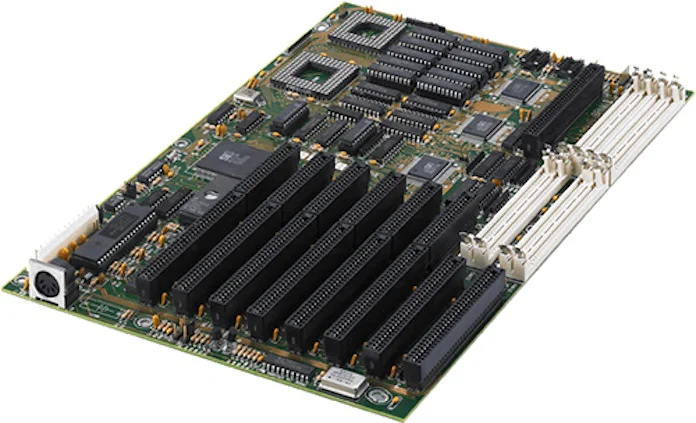Then as today, gamers sought out specialized displays to give them the best experience in games. In 2006, we launched our first LCD display designed primarily for gaming: the PG191. It featured a maximum resolution of 1280×1024, a 2ms response time, SRS TruSurroundXT audio, and five touch-sensitive preset buttons on the side panel for various effects.

Over the years, one of our highest priorities has been making the process of building a PC easier with every generation. In 2018, we introduced AI Overclocking with our Z390 motherboard series. Powered by exhaustive research and characterization of the performance potential of thousands of actual CPUs in our testing labs, this tool leads the industry for overclocking performance and ease of use. It boosts CPU clocks with just one click. AI Overclocking’s sophisticated intelligence also monitors the efficiency of your CPU cooler and changes in the operating environment of your system to tune its parameters over time for the best performance with your system’s unique set of components.


Of course, gamers are far from the only folks who make use of high-performance PCs. Content creators of all kinds — filmmakers, video editors, animators, photographers, graphic designers, architects, engineers, product designers, and more — all rely on their PCs to help them bring their creative visions to life. Through our ProArt family of displays, motherboards, peripherals, and more, we ensure that these creators have hardware built with their needs in mind.
Our relentless pursuit of innovation led us into new product categories. In 1996, we debuted our first graphics card, the ASUS 375, a solution focused on commercial use. As PC games increasingly required graphics cards, we debuted the ASUS AGP-V3000 to compete with offerings from Voodoo. This card was the product that allowed us to truly break into the graphics card industry. In the years that followed, we established new industry standards by introducing the first graphics card with a fan-enhanced heatsink in 1998, the first graphics card with a 3D glasses kit in 1998, and the first graphics card with a premium black PCB in 2002.





As the new millennium progressed, we expanded our product families to meet the needs of a growing community of PC builders. In 2009, we launched the first TUF motherboard: the Sabertooth 55i.
To meet that need, we launched the Republic of Gamers (ROG) in 2006. The first ROG Motherboard — ROG Crosshair Extreme — was designed by a select, specialized R&D team. It redefined expectations for what a motherboard could be, offering the power and flexibility that allowed enthusiasts to push the limit of performance. The debut of the Crosshair Extreme catapulted the ROG brand forward, and ROG has remained a gaming hardware leader ever since.


Additionally, we encourage you to stay tuned as we approach the 2024 Consumer Electronics Show (CES). At this yearly event, we unveil many of our most exciting new products. We’re not ready to share the details today, but we will say this: you won’t want to miss this year’s announcements. To make sure that you hear the latest news on ASUS products the moment that it’s available, use the “Subscribe to Our Newsletter” tool in the upper-right-hand corner of your screen to get quick email notifications when we post a new article here on Edge Up.
منبع: https://edgeup.asus.com/2023/a-look-at-the-history-of-pc-diy-shows-asus-leading-the-way-with-relentless-innovation/
Even as our company was getting its sea legs, a sea change was underway in the early PC industry. In 1989, the year that ASUS was founded, Intel announced the i486 CPU. At the time, ASUS wasn’t yet receiving engineering samples for upcoming Intel CPUs — a usual requirement for building a motherboard prototype. But that didn’t stop our engineers.
In 2013, we debuted the ROG Poseidon GTX 780, the first graphics card to feature a combined water block and air cooler. The card could be cooled by standard air cooling, or plumbed into a custom water loop to deliver lower temps. In the years since, we’ve continued to refine our approach to using liquid cooling for graphics cards. Today, we offer the ROG Matrix GeForce RTX 4090, a record-breaking GPU that uses liquid metal thermal compound and an all-in-one cooling loop with a dedicated 360mm radiator.

In 2011, we debuted the ProArt PA246Q, a 24-inch monitor designed for media professionals. It featured a 10-bit P-IPS panel with 98% coverage of the Adobe color space, an adjustable stand, and a comprehensive color management system. One paramount spec for many creators is professional-grade accuracy. The PA246Q was factory-calibrated to achieve a ΔE of less than 5. Our current lineup pushes the bar for accurate color production even further, with nearly all our current ProArt displays achieving a ΔE of less than 2, and the stunning ProArt Display OLED PA32DC achieving a ΔE of less than 1.
Relentless innovation across our product families

PC gamers spend considerable time with their hands on their mouse and keyboard, so they’re understandably passionate about their experience with these crucial pieces of kit. In 2016, we gave gamers premium versatility with the first high-end peripheral developed by ROG: the ROG Claymore. We infused this deck with RGB lighting and a detachable numpad that could be positioned for right or left-handed use. Fast forward to 2023, and you’ll see us continuing to innovate in the world of gaming keyboards. This year, we launched the award-winning ROG Azoth, a compact keyboard in the 75% form factor. It offers exceptional customizability with its hot-swappable pre-lubed ROG NX mechanical switches, an embedded OLED display, tri-mode connectivity, and PBT doubleshot keycaps.
Graphics cards weren’t the only new items on our menu in the late ‘90s and early 2000s. We launched our first notebook, the ASUS P6300, in 1997, and our first personal digital assistant and 3G flip phone in 2002 and 2003, respectively.
Developed with a laser-focus on military-grade reliability, the 55i set a standard that has remained the hallmark of all TUF hardware since. Each TUF motherboard undergoes extreme temperature tests, extensive Mean Time Between Failure (MBTF) tests, and multiple whole-build server-grade stability tests. Stringent testing ensures that every TUF motherboard can be trusted in any environment.
Our relentless pursuit of incredible gaming experiences led to the launch of one of our most decorated motherboards: the ROG Striker Extreme. This board enabled overclockers to break all manner of records. A network of copper heatpipes and heatsinks dominate the surface of the board, and optional active cooling for the chipset helped extreme OC’ers squeeze extra performance from their hardware.
Expanding our product families to reach every builder
Even with this rapid expansion of our product portfolio, we kept a focus on our motherboard lineup. By the late 1990s, Intel’s Pentium CPUs were synonymous with high-performance home computing. With high-quality boards like the ASUS P2B and AUS CUSL2-C Black Pearl, we gave PC DIY enthusiasts rock-solid options for building their Pentium-based PCs. (And in case you’re wondering, yes, we love Weird Al’s ode to Pentium CPUs as much as you do.)
Claiming leadership in the rapidly growing world of PC gaming
In 2014, we set a new standard for gaming displays with the first-ever ROG display: the ROG Swift PG278Q. It was the world’s first 144Hz WQHD panel with native NVIDIA G-SYNC support. That combination of a high refresh rate with variable refresh rate tech allowed it deliver impeccable smoothness with no tearing and minimal lag. We’re still pushing the boundaries for gaming displays. Just look at the ROG Swift Pro PG248QP. Featuring the world’s fastest TN panel, it’s approximately 50% more responsive than traditional TN panels, and it boasts a dazzling 540Hz refresh rate (OC).
Since our humble beginnings back in 1989, we’ve transformed the PC DIY industry — but we’re not done innovating. To learn more about our latest solutions for PC builders, please join us on December 3rd, 2023 for ASUS PC DIY Day. We’re hosting a special event at our ASUS Experience Center in Fremont, California to celebrate all things PC building. Bring your friends and family to learn how to build with our experts, get inspired, and win some awesome prizes. Even if you can’t make it in person, check out our event page to connect with us.
Our very first production motherboard was the ASUS ISA-386C. You’ll excuse us if we get a little nostalgic looking back on rows of black ISA slots atop a green PCB. For many of us, our love affair with building PCs started with an Intel i386 processor and motherboard like this one.
The 1990s were seminal years for the development of PC gaming, but the 2000s saw one genre-defining hit after another. As the gaming industry grew, so too did the demand for high-performance, high-quality hardware designed for overclockers and gaming enthusiasts.
AI Overclocking remains one of the key features of our motherboard lineup, but these days it’s just one of the many intelligent controls that we offer to users of our latest Z790 motherboards. With features like AI Cooling II, AI Networking, Two-Way AI Noise Cancelation, DIMM Flex, and AEMP II, we make it easier than ever to get your PC running optimally with just a few clicks.
Learn even more about PC DIY at ASUS


(embed)https://www.youtube.com/watch?v=SwaCtn6AznM(/embed)
A great router is crucial for rock-solid online gaming, especially in today’s connected homes. In 2018, we introduced the world’s first tri-band WiFi 6 router: the ROG Rapture GT-AX11000. This wireless gaming router is designed for folks who want to keep multiple devices connected and still get incredible gaming performance. Enjoy up to eight simultaneous WiFi streams for more video streaming, gaming and browsing for everyone in your home. WiFi 6 helps ensure an ultra-fast, stable connection for all game devices. Today, we’re working to gear you up for the next generation of wireless tech — WiFi 7 — with the quad-band ROG Rapture GT-BE98.

As our business quickly developed, ASUS Chairman Jonney Shih actively trained and mentored the company’s new engineers, focusing on advanced electronics theory and product development. He installed a company-wide passionate focus on innovation. At the time, we devoted at least 2 percent of revenue and 10 percent of headcount specifically to research and development — percentages that put us on par with the world’s leading IT companies.
Back in 1989, a few ambitious engineers met for a conversation in a coffee shop in Taipei to share their dream of creating a “small and beautiful company.” A mere six years later, their company — ASUS — had become the world’s leading motherboard maker. Jumping forward to today, ASUS is known for the world’s best motherboards and high-quality personal computers, monitors, graphics cards, routers, peripherals, and much more. Looking back over the history of PC DIY, it’s clear that ASUS has played a pivotal role in pushing technology forward with innovative new products that put incredible experiences into the hands of enthusiasts and everyday PC users alike.
The early days: proof of concept
With every generation of products that we bring to the market, we pursue new opportunities to deliver a better experience. The last ten years of ASUS hardware demonstrate time and again our commitment to innovation.
We manufactured a 486 motherboard based only on information provided by Intel and our experience designing 386 motherboards. We took our motherboard to an Intel facility in Taiwan for testing, where Intel’s engineers were amazed that we had managed to surmount design obstacles that they were still addressing. Intel subsequently partnered with us to develop the ISA-486 motherboard. By 1992, we had established a formal partnership with Intel, and we were producing some of the most famous and well-respected motherboards of the 1990s.
We kick off a new millennium with an era of rapid transformation














